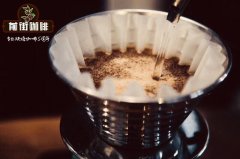Which brand of African Kenyan coffee beans is the best Kenyan coffee grade collection

Professional coffee knowledge exchange more coffee bean information please follow the coffee workshop (Wechat official account cafe_style)
Qianjie-Kenyan Coffee introduction
Kenyan coffee, which is mostly grown at an altitude of 1500murmur2100m, is harvested twice a year. To ensure that only ripe berries are picked, people have to patrol the forest about seven times. Kenyan coffee is grown by small farmers. After they harvest the coffee, they first send the fresh coffee beans to the cooperative cleaning station. The washing station sends the dried coffee to the cooperative in the form of "parchment coffee beans" (that is, coffee beans covered with endocarp) to the cooperative ("parchment coffee beans" is the last state of coffee beans before peeling).
The official grading system for raw beans in Kenya is as follows:
Grade E (Elephant beans): this is the largest grain grade of Kenyan coffee beans, above 18 mesh (18beat 64 "), also known as elephant beans, the quantity of which is so small that this grade can hardly be seen in the Chinese market.
AA grade: the particle size (Screen Size) is between 17 and 18 mesh (7.20mm screen), the output is not much, this is the most popular grade in China's middle and high-end market.
AB grade: particle size (Screen Size) is between 15 and 16 mesh (6.8mm-6.2mm sieve), accounting for the majority of production, but also the most common raw bean grade
PB: round raw beans, PB (Peaberry beans) is special, usually produced at the end of coffee trees that blossom too late or too early, because the yield is rare, accounting for only 10% of the output, the round beans produced by the same coffee tree are more expensive than other flat beans (Flat Bean), while the round beans are specially collected together, the defective beans are mostly removed, the proportion of defects is reduced, the particles are more consistent, and the roasting is more uniform. The taste is improved.
Class C: particle size (Screen Size) between 12 and 14 mesh (4.8mm-5.6mm screen)
TT grade: from AA and AB grade beans, the lighter raw beans blown by air flow filter indicate that the beans are soft and the hardness is not up to standard.
T grade: particle size (Screen Size) less than 12 mesh size (4.8mm screen) from C-grade beans, the lighter weight beans blown out by an airflow filter, indicating that the beans are soft, substandard hardness, and small particles, containing some broken and defective beans.
MH/ML grade: beans that have not been washed and have not been selected, because they have been harvested, fall beans, accounting for about 7% of all coffee beans, belong to the lowest grade beans, only for the Kenyan domestic market.
Kenya AA (Kenya Ngariama AA): the indispensable coffee in the world's recognized and most advanced Arabica coffee series is Kenya AA, where AA refers to the size, appearance and density of raw beans, ranging from AA of the largest raw bean to T of the smallest raw bean.
Kenyan coffee, the largest for AA grade, contains the most oil, which is unique to Kenya and can induce strong aroma. Kenyan AA coffee is mostly washed.
Knowledge: coffee roasting is a process that produces Mena reaction and caramel reaction inside raw beans, producing more wonderful flavors.
In short: Qianjie is a coffee research hall, happy to share the knowledge about coffee with you, we share unreservedly just to make more friends fall in love with coffee, and there will be three low-discount coffee activities every month. The reason is that Qianjie wants to make more friends drink the best coffee at the lowest price, which has been Qianjie's tenet for 6 years!
END
Important Notice :
前街咖啡 FrontStreet Coffee has moved to new addredd:
FrontStreet Coffee Address: 315,Donghua East Road,GuangZhou
Tel:020 38364473
- Prev

What is the acid of Kenyan coffee? how does the origin of Kenyan coffee make it so sour?
Professional coffee knowledge exchange more coffee bean information please follow Coffee Workshop (Wechat official account cafe_style) Front Street-Kenya Coffee introduces Ethiopia (Ethiopia), the origin of coffee trees in Kenya's northern neighbor, but did not engage in coffee cultivation until the beginning of the 20th century. Missionaries introduced Arabica trees from the leaves in the 19th century, but did not plant a large number of them until 189th.
- Next

What do you recommend for Kenyan coffee beans? Kenya aa grading is quality assurance.
Professional coffee knowledge exchange more coffee bean information please follow the coffee workshop (Wechat official account cafe_style) front street-Kenya coffee introduction usually Kenya coffee is classified as follows: 1) Common classification: hand-picked coffee fruit, after hand-picked, pick out immature fruit (unripe), overripe fruit (overripe) and other defects, peeling, after about 36 hours
Related
- Beginners will see the "Coffee pull flower" guide!
- What is the difference between ice blog purified milk and ordinary milk coffee?
- Why is the Philippines the largest producer of crops in Liberia?
- For coffee extraction, should the fine powder be retained?
- How does extracted espresso fill pressed powder? How much strength does it take to press the powder?
- How to make jasmine cold extract coffee? Is the jasmine + latte good?
- Will this little toy really make the coffee taste better? How does Lily Drip affect coffee extraction?
- Will the action of slapping the filter cup also affect coffee extraction?
- What's the difference between powder-to-water ratio and powder-to-liquid ratio?
- What is the Ethiopian local species? What does it have to do with Heirloom native species?

